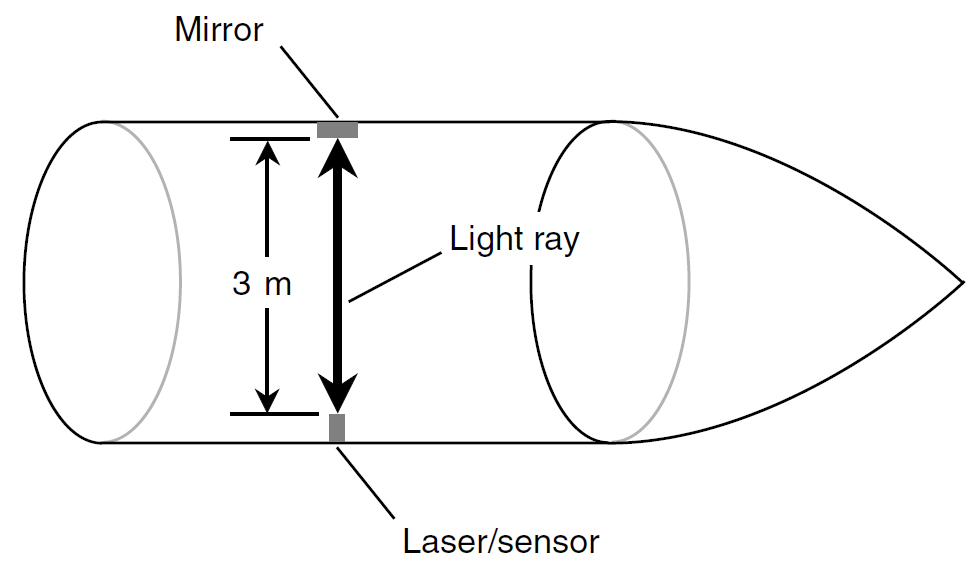
تاريخ الفيزياء

علماء الفيزياء


الفيزياء الكلاسيكية

الميكانيك

الديناميكا الحرارية


الكهربائية والمغناطيسية

الكهربائية

المغناطيسية

الكهرومغناطيسية


علم البصريات

تاريخ علم البصريات

الضوء

مواضيع عامة في علم البصريات

الصوت


الفيزياء الحديثة


النظرية النسبية

النظرية النسبية الخاصة

النظرية النسبية العامة

مواضيع عامة في النظرية النسبية

ميكانيكا الكم

الفيزياء الذرية

الفيزياء الجزيئية


الفيزياء النووية

مواضيع عامة في الفيزياء النووية

النشاط الاشعاعي


فيزياء الحالة الصلبة

الموصلات

أشباه الموصلات

العوازل

مواضيع عامة في الفيزياء الصلبة

فيزياء الجوامد


الليزر

أنواع الليزر

بعض تطبيقات الليزر

مواضيع عامة في الليزر


علم الفلك

تاريخ وعلماء علم الفلك

الثقوب السوداء


المجموعة الشمسية

الشمس

كوكب عطارد

كوكب الزهرة

كوكب الأرض

كوكب المريخ

كوكب المشتري

كوكب زحل

كوكب أورانوس

كوكب نبتون

كوكب بلوتو

القمر

كواكب ومواضيع اخرى

مواضيع عامة في علم الفلك

النجوم

البلازما

الألكترونيات

خواص المادة


الطاقة البديلة

الطاقة الشمسية

مواضيع عامة في الطاقة البديلة

المد والجزر

فيزياء الجسيمات


الفيزياء والعلوم الأخرى

الفيزياء الكيميائية

الفيزياء الرياضية

الفيزياء الحيوية

الفيزياء العامة


مواضيع عامة في الفيزياء

تجارب فيزيائية

مصطلحات وتعاريف فيزيائية

وحدات القياس الفيزيائية

طرائف الفيزياء

مواضيع اخرى
A LASER CLOCK
المؤلف:
S. Gibilisco
المصدر:
Physics Demystified
الجزء والصفحة:
534
13-11-2020
1773
A LASER CLOCK
Suppose that we have a space ship equipped with a laser/sensor on one wall and a mirror on the opposite wall (Fig. 1). Imagine that the laser/sensor and the mirror are positioned so that the light ray from the laser must travel perpendicular to the axis of the ship, perpendicular to its walls, and (once we get it moving) perpendicular to its direction of motion. The laser and mirror are adjusted so that they are separated by 3.00 m. Because the speed of light in air is approximately 3.00 × 108 m/s, it takes 1.00 × 10-8 s, or 10.0 nanoseconds (10.0 ns), for the light ray to get across the ship from the laser to the mirror and another 10.0 ns for the ray to return to the sensor. The ray therefore requires 20.0 ns to make one round trip from the laser/sensor to the mirror and back again.
Our laser emits pulses of extremely brief duration, far shorter than the time required for the beam to get across the ship. We might even suppose that the beam emits just a few photons in each burst! We measure the time increment using an extremely sophisticated oscilloscope so that we can observe the pulses going out and coming back and measure the time lag between them. This is a special clock; its timekeeping ability is based on the speed of light, which Einstein proposed is constant no matter from what point of view it is observed. There is no better way to keep time.

Fig. 1. A space ship equipped with a laser clock. This is what an observer in the ship always sees.
 الاكثر قراءة في مواضيع عامة في النظرية النسبية
الاكثر قراءة في مواضيع عامة في النظرية النسبية
 اخر الاخبار
اخر الاخبار
اخبار العتبة العباسية المقدسة

الآخبار الصحية















 قسم الشؤون الفكرية يصدر كتاباً يوثق تاريخ السدانة في العتبة العباسية المقدسة
قسم الشؤون الفكرية يصدر كتاباً يوثق تاريخ السدانة في العتبة العباسية المقدسة "المهمة".. إصدار قصصي يوثّق القصص الفائزة في مسابقة فتوى الدفاع المقدسة للقصة القصيرة
"المهمة".. إصدار قصصي يوثّق القصص الفائزة في مسابقة فتوى الدفاع المقدسة للقصة القصيرة (نوافذ).. إصدار أدبي يوثق القصص الفائزة في مسابقة الإمام العسكري (عليه السلام)
(نوافذ).. إصدار أدبي يوثق القصص الفائزة في مسابقة الإمام العسكري (عليه السلام)


















